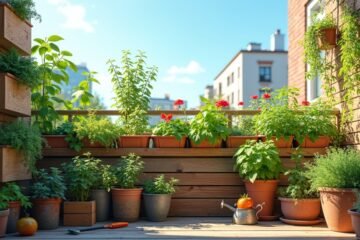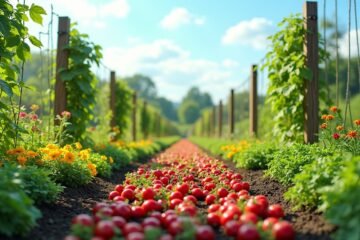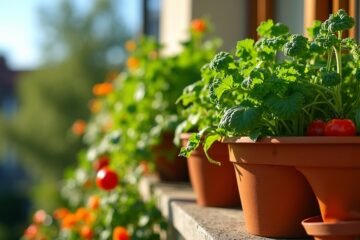Designing a small vegetable garden effectively is like crafting a mini paradise right in your backyard! You can turn that sunny corner into a vibrant hub of fresh tomatoes and crunchy cucumbers. By maximizing light and using creative space-saving methods, like vertical gardening, you’ll cultivate a stash of produce that could make any chef jealous. Plus, it’s a fun way to stay active! Curious about how to get started? Keep going, there’s plenty more to discover!
Assessing Your Space and Resources
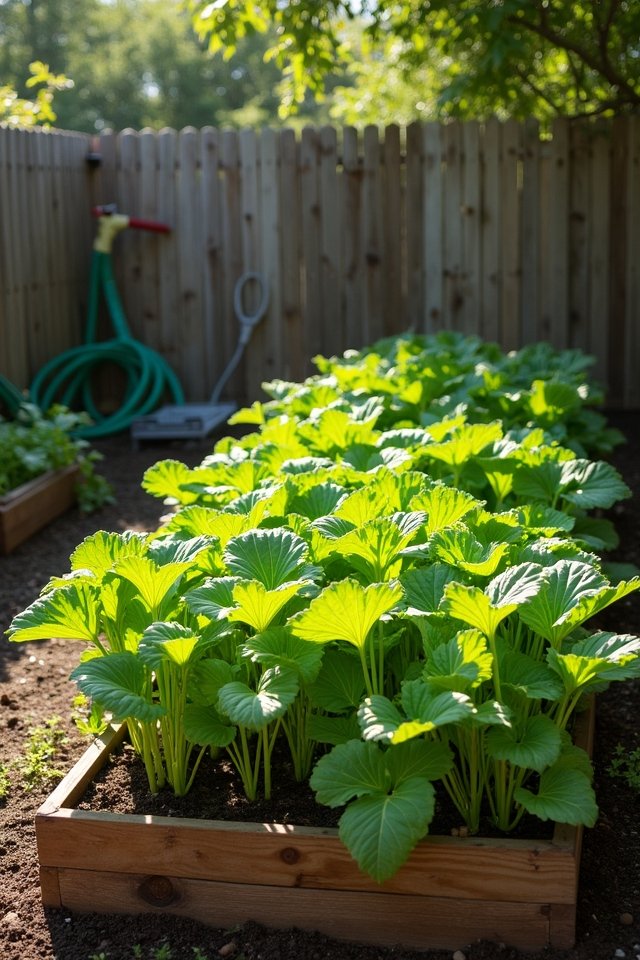
When it comes to designing your small vegetable garden, the first step is often the most exciting—assessing your space and resources! You might feel like a treasure hunter as you dig into a space assessment, noticing those sunny spots perfect for tomatoes. Grab your tape measure and take stock of every nook and cranny. This isn’t just a chore, it’s an adventure! Next, it’s time for resource evaluation. What tools do you already have? Maybe a trusty spade or some colorful pots? Imagine transforming quirky containers into vibrant herb holders! Don’t forget to think creatively about soil and water access. The thrill of turning what you’ve got into a productive paradise is just the beginning. Are you ready to innovate? Let’s dig in!
Choosing the Right Location
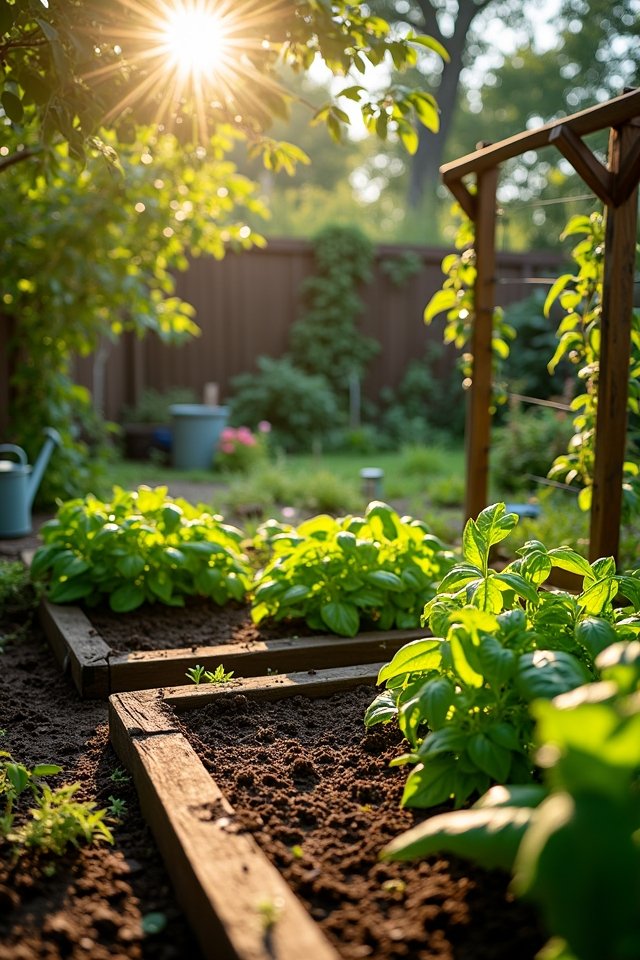
You’ve mapped out your space and gathered your tools—now it’s time to think about location! Choosing a spot for your small vegetable garden is essential for success. First, consider sunlight requirements: most veggies thrive on at least six hours of direct sunlight, so don’t tuck them into the shade like a secret snack! Next, address drainage considerations. Visualize your plants’ roots: they’ll drown in puddles but crave quick-draining soil. You might even want a raised bed for a stylish twist! Imagine lush greens and vibrant tomatoes flourishing in a sunlit corner, while your plants dance in a gentle breeze. So, find that perfect patch—let your garden bask in the glow of the sun, and watch it thrive!
Selecting the Best Vegetables for Small Gardens
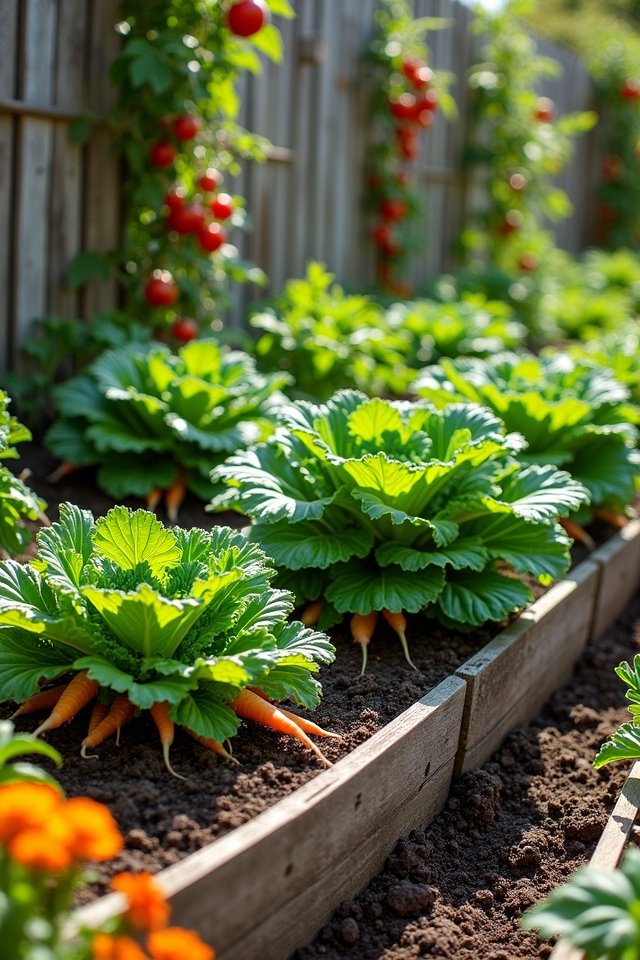
Selecting the best vegetables for your small garden can feel like a delightful puzzle, one that’s just waiting for you to solve! You want to maximize your space while enjoying a colorful harvest. Consider heirloom varieties like ‘Brandywine’ tomatoes or ‘Rainbow Carrot’ seeds—these beauties pack flavor and nostalgia. They flourish in tight spots and add character to your garden!
Don’t forget about container options! You can grow compact veggies like peppers or herbs in stylish pots on a balcony or patio. Mixing textures and colors creates a feast for the eyes. Why not plant a fragrant basil alongside vibrant peppers for a sensory delight? With a little creativity, your small garden can burst with exciting flavors and stunning displays!
Understanding Soil Quality and Preparation
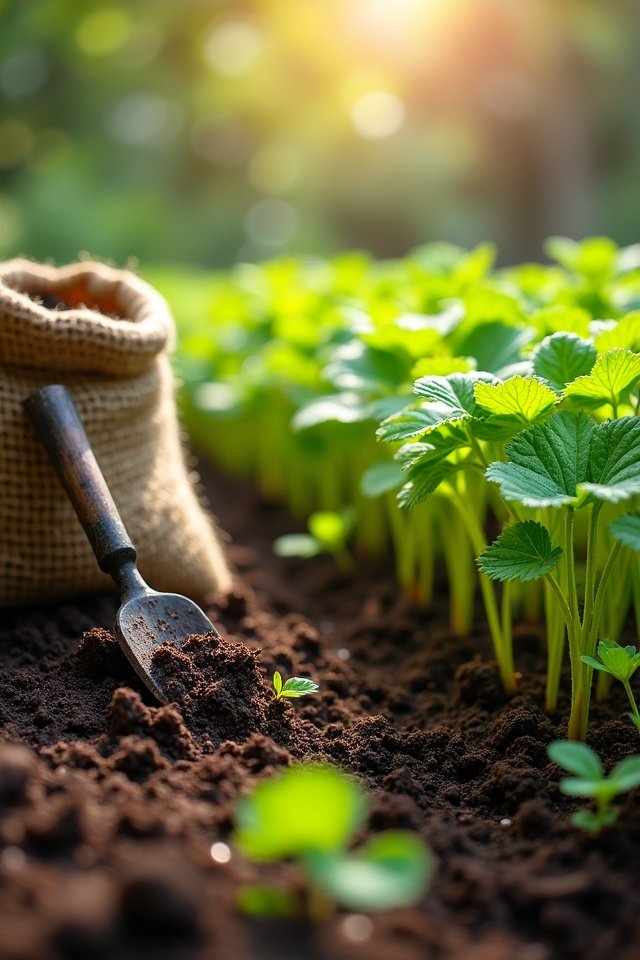
To grow a successful small vegetable garden, understanding soil quality and preparation is a must! Think of your soil as the foundation of a sturdy house. If it’s off, nothing flourishes. Start by analyzing soil composition—combine sand, silt, and clay in the right ratios. Don’t forget about that all-important nutrient balance! Your veggies crave nitrogen, phosphorus, and potassium. Adding organic matter like compost or aged manure boosts this balance, enriching your soil like a hearty stew. And hey, let’s not neglect pH levels; plants can be picky! With a little love and effort, you’ll create a thriving ecosystem beneath your feet! So, roll up those sleeves, get messy, and let the magic of gardening unfold!
Utilizing Vertical Gardening Techniques
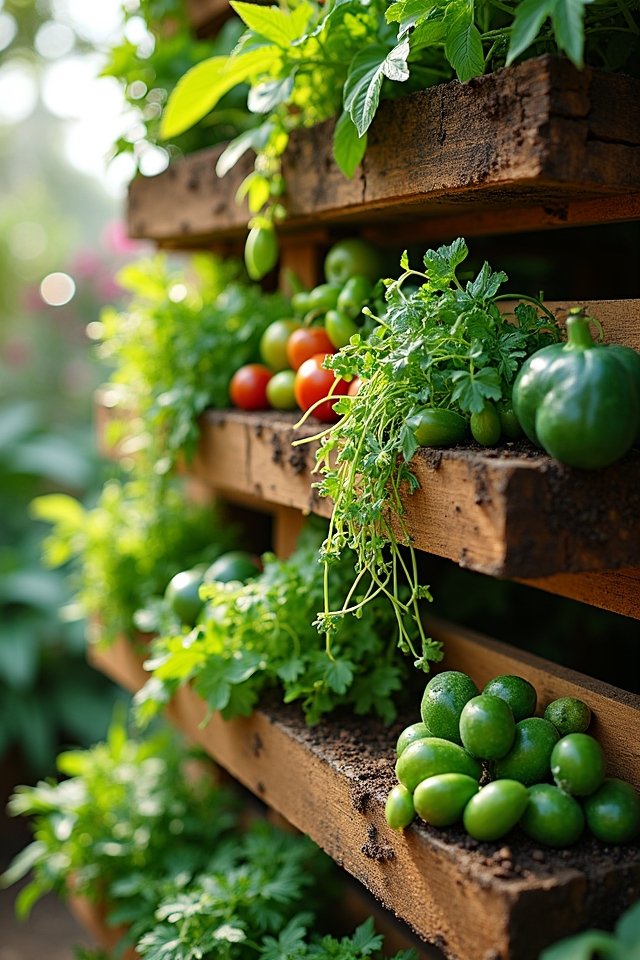
While it might seem challenging, utilizing vertical gardening techniques can transform even the tiniest spaces into lush, green paradises! Imagine reaching for fresh herbs, not bending over to find them buried in a bare patch! With a little creativity, your small garden can soar.
- Vertical plantings create a stunning green wall that’s eye-catching.
- Creative trellising can support climbing veggies like beans or cucumbers, adding height and flair.
- Hanging pots? Yes, please! They’re perfect for strawberries or cascading flowers.
- Old pallets make fantastic garden frames, holding succulents or colorful blooms.
Get inspired! Every inch of your garden can burst with life, making your culinary adventures even more delightful. Are you ready to climb to new gardening heights? Let’s go!
Incorporating Companion Planting
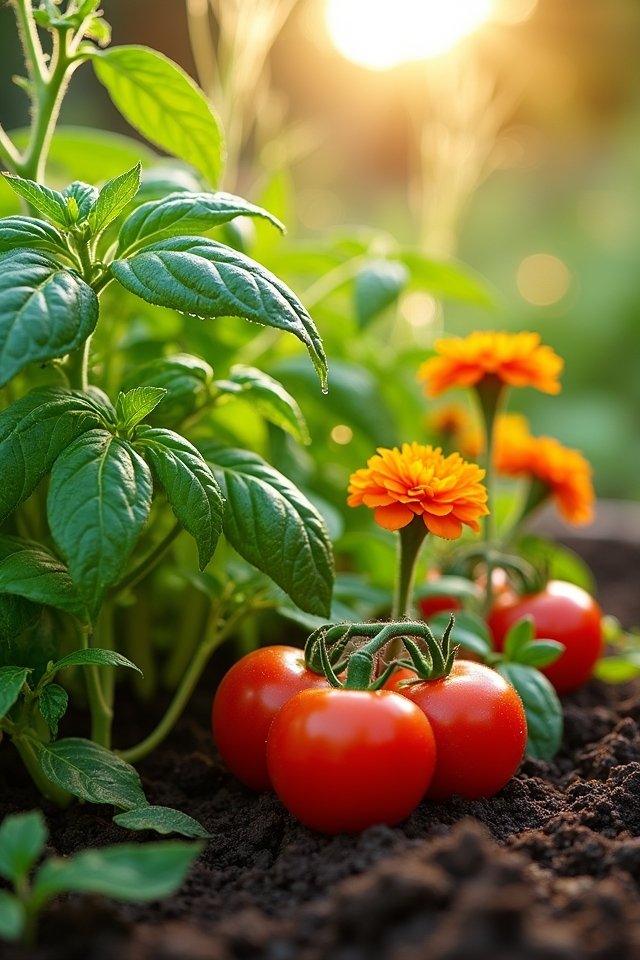
When you want your small vegetable garden to thrive, incorporating companion planting can really make a difference! Imagine your tomatoes teaming up with basil, creating a love-at-first-sight scenario that boosts flavor and repels pests. These plant pairings not only maximize space but also cultivate dynamic relationships in your garden. The companion benefits? Well, they’re pretty impressive! For instance, you’ll find that carrots and onions fend off each other’s pests like a well-trained security team. How cool is that? By mixing compatible plants, you’ll create a bustling ecosystem that invites butterflies and beneficial bugs, making your garden more vibrant! So, let’s get planting those dream duos and watch your small vegetable paradise flourish like never before!
Maximizing Sunlight Exposure
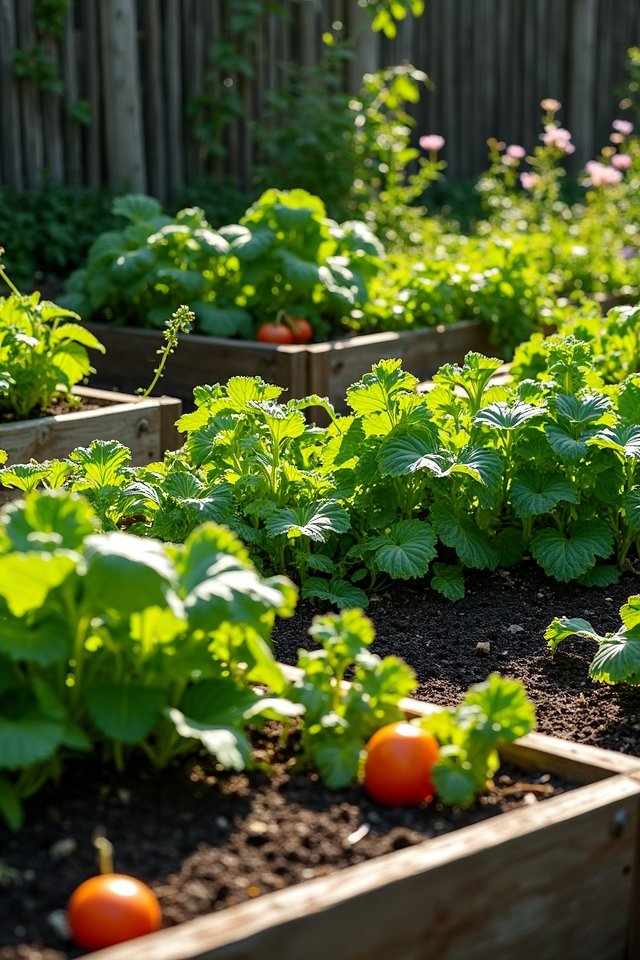
Got your companion plants all set? Great! Now let’s maximize that precious sunlight exposure! Catching the right sunlight angles can transform your tiny garden into a thriving paradise! Here’s how you can soak up those rays:
- Position your garden wisely: Lay out your plants in rows that face south for ideal sunlight.
- Choose tall plants wisely: Plant taller veggies like tomatoes where they won’t create seasonal shading on shorter crops.
- Use reflective surfaces: Place light-colored materials near your garden to bounce more light onto your plants.
- Regularly assess: Move pots or adjustable garden beds to track changing sunlight conditions!
Embrace the sun, and watch your veggies dance in the light! Why settle for less when you can innovate your garden experience?
Implementing Efficient Watering Methods
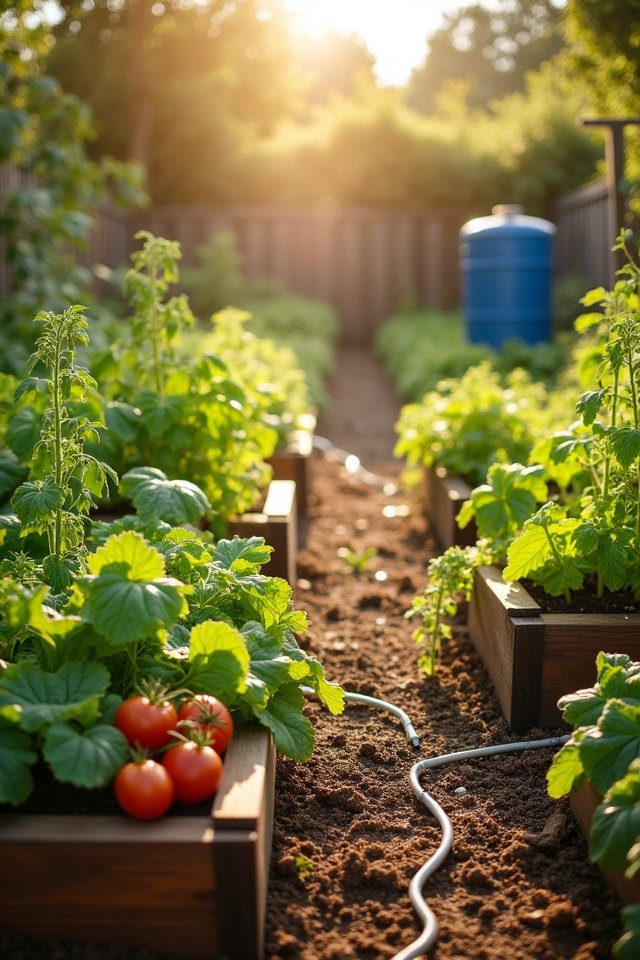
Have you ever wondered how to make your vegetable garden thrive without drowning it in water? You can do this with innovative methods like drip irrigation and rainwater harvesting! Imagine a system that delivers water directly to your plant roots, just like a nourishing drink tailored for each one. Drip irrigation guarantees every drop counts, saving you time and money. Meanwhile, why not collect rainwater? It’s a free resource that your garden craves! Picture those lush, green leafy veggies soaking in nature’s goodness. Plus, using what falls from the sky makes you feel like a gardening superhero! So, adopt these efficient watering methods, and watch your garden flourish without a puddle in sight! Happy gardening!
Planning for Maintenance and Harvesting
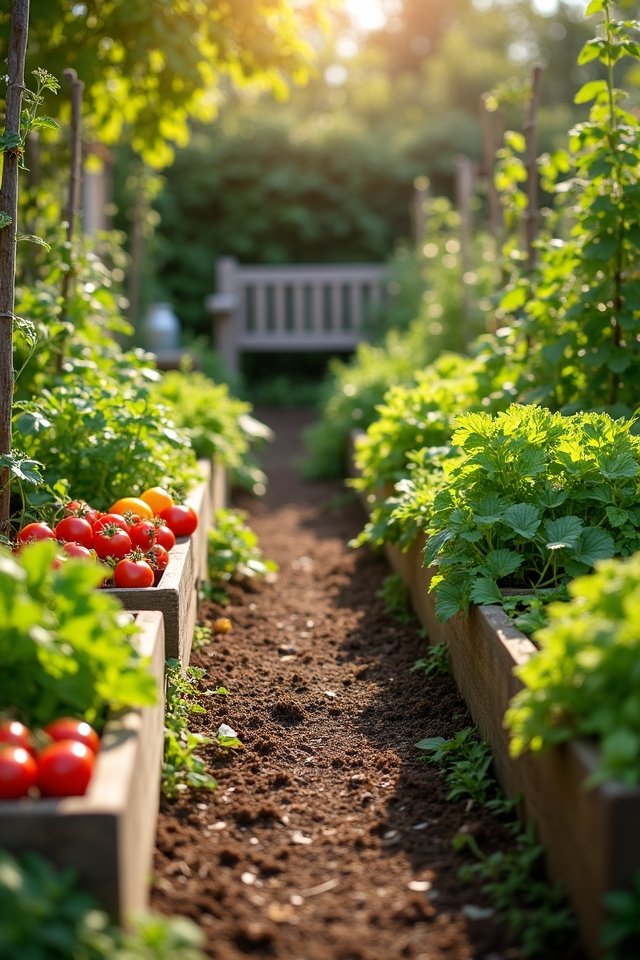
While your vegetable garden may seem like a green paradise now, planning for maintenance and harvesting is essential to keeping that blissful experience alive! You’ll want to adopt innovative strategies that keep your garden thriving.
Consider these tips:
- Implement crop rotation to prevent soil depletion and control pests.
- Utilize seasonal planting for continuous harvests—think juicy tomatoes in summer and crunchy carrots in fall!
- Schedule regular watering to guarantee plants are hydrated but not soggy—nobody likes soggy veggies!
- Keep a harvest calendar to track which plants to pick and when—it’s like a treasure map for your taste buds!
Enhancing Your Garden Aesthetics
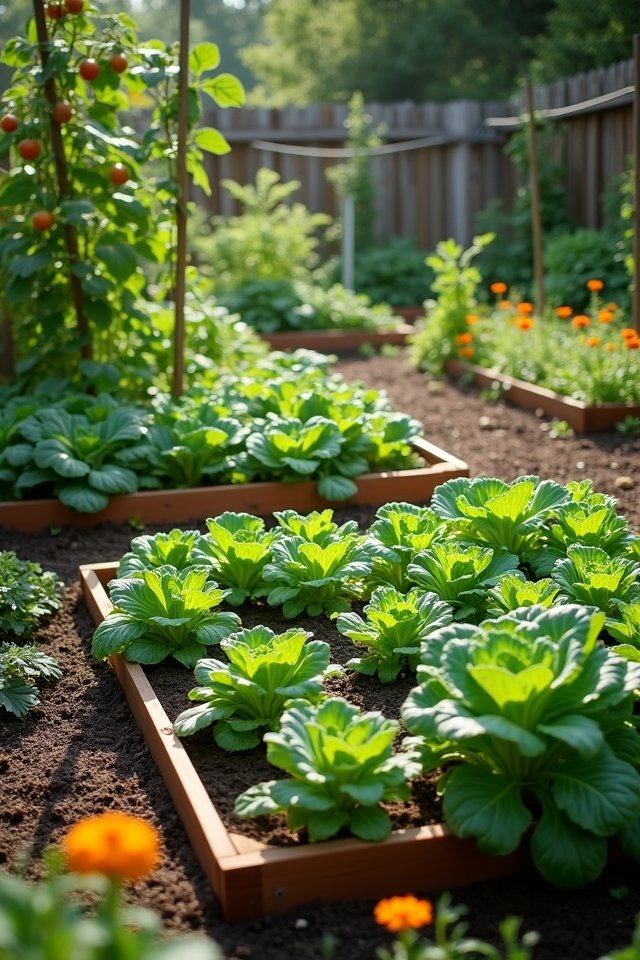
A vegetable garden isn’t just about the food; it’s also about creating a visual feast for the eyes! You can elevate your space with unique garden decor like vibrant trellises, colorful pots, and whimsical fairy lights that twinkle at dusk. Imagine lush greens nestled beside bright, cheerful flowers—striking that perfect visual harmony! Mix edibles like purple eggplants and bright red tomatoes with ornamental plants for contrast. Consider a sensory pathway of herbs that release delightful scents when you brush against them. You’re not just growing veggies; you’re creating a masterpiece! So, what’s holding you back? Let your creativity run wild and transform your garden into a enchanting retreat that pleases both the palate and the soul!
Frequently Asked Questions
How Do I Prevent Pests in a Small Garden?
To prevent pests in your small garden, why not get creative? You can use natural repellents like garlic spray or peppermint oil—bugs hate those! And don’t forget companion planting; pairing marigolds with your tomatoes can be like sending in reinforcements! Just imagine your veggies thriving, all while keeping those pesky critters at bay. It’s like throwing a garden party, but only the desirable guests are invited! Exciting, right? Happy gardening!
What Tools Do I Need for a Small Vegetable Garden?
You’ll need some essential tools for your small vegetable garden! Grab a trowel for digging and planting—it’s like your garden’s best friend. A hand rake helps prepare the soil, ensuring it’s as smooth as butter. Don’t forget scissors for snipping, and a watering can to deliver hydration like a gentle rain. For planting techniques, a dibber can help you poke holes for those tiny seeds. Get ready to dig in and watch your garden flourish!
Can I Grow Vegetables Indoors in a Small Space?
Absolutely, you can grow veggies in your cozy little sanctuary! Think of indoor gardening like a magic show—transforming your small space into a vibrant jungle of greens! With clever space optimization, you’ll be amazed how herbs like basil or cherry tomatoes can flourish on windowsills. Picture bright red peppers glowing like jewels! Just grab some pots, quality soil, and of course, a sprinkle of love—watch your plants thrive in their new home! How awesome is that?
How Can I Store My Harvest Effectively?
Storing your harvest effectively is an art! You’ve got options like canning, freezing, and drying to preserve those vibrant flavors. Imagine biting into a sun-ripened tomato in winter—heavenly, right? Use airtight containers for freezing and mason jars for canning. Don’t forget to label everything, or you’ll feel like a detective in your own kitchen! Whether it’s pickles or dried herbs, innovative storage techniques keep your garden bounty fresh and delicious all year long!
What Are the Benefits of Organic Gardening in a Small Garden?
Organic gardening in a small space is like putting a magic spell on your plants! You’ll adopt sustainable practices that not only boost soil health but make Mother Nature smile. Picture vibrant veggies bursting with flavor, free from nasty chemicals. You’re creating a mini-ecosystem, attracting helpful bugs and delicious pollinators. Plus, your home-grown food tastes unbelievably fresh, like a summer’s day in your mouth! Who wouldn’t want that garden glory? Let’s dig in!
